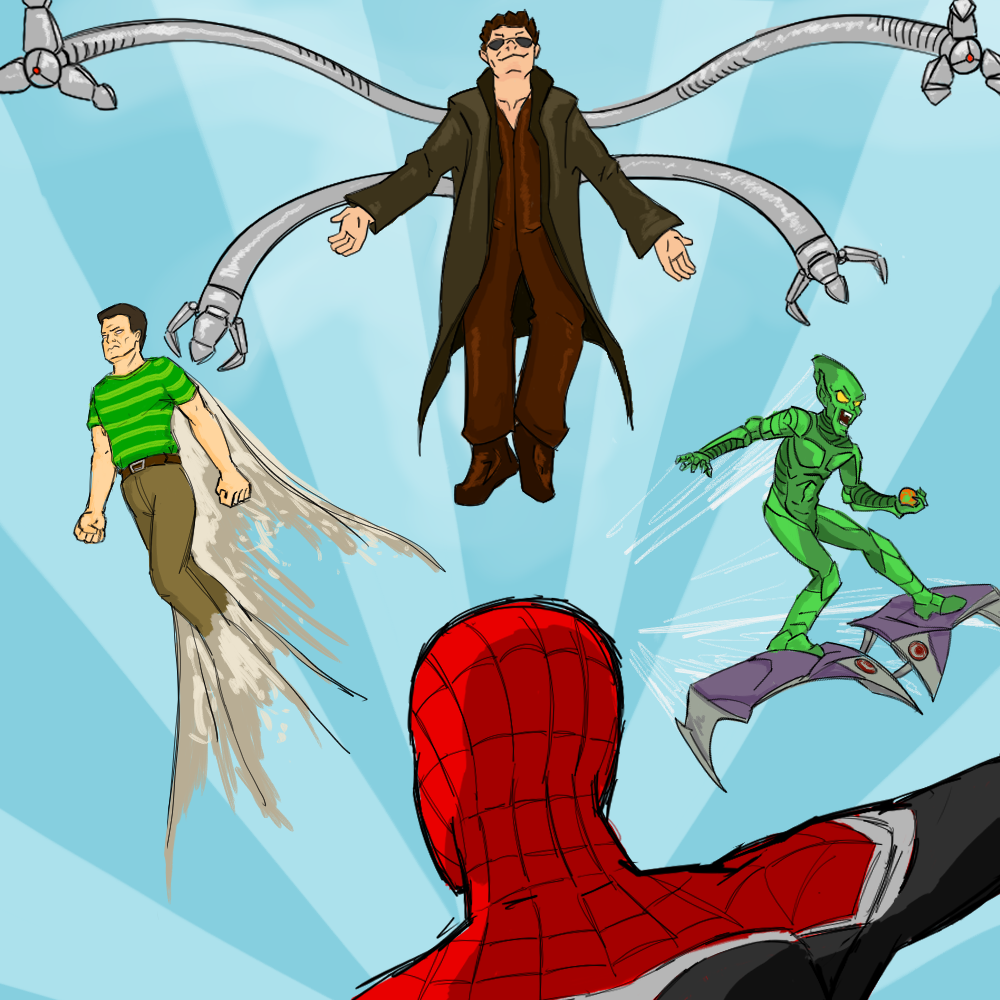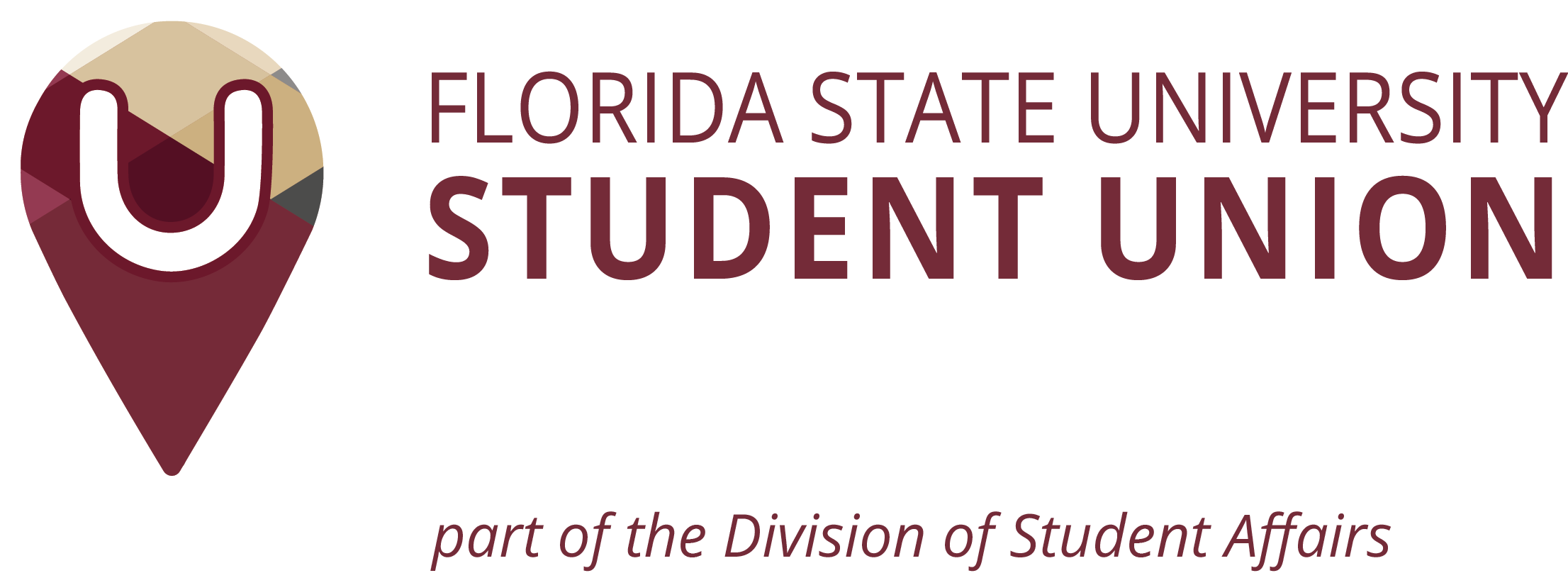Please visit response.fsu.edu for official FSU updates and resources.
Spider-Man: No Way Home and the Dangers of the Multiverse
 Warning: Spoilers ahead for Spider-Man 1-3 (2002-2007) and Spider-Man: Far From Home (2019)
Warning: Spoilers ahead for Spider-Man 1-3 (2002-2007) and Spider-Man: Far From Home (2019)
On August 23, Marvel Studios and Sony Pictures set the internet ablaze with the first trailer to the highly anticipated third film in the Tom Holland Spider-Man trilogy, Spider-Man: No Way Home. The trailer gave us a glimpse of the upcoming story, in which the titular web-slinger sets out to clear his name of the false murder accusations placed upon him by Jake Gyllenhaal’s Mysterio at the end of the previous film. On this journey, Peter Parker will reunite not only with familiar faces from the current Marvel Cinematic Universe, but also with returning villains from the previous Spider-Man movie universes led by Tobey Maguire and Andrew Garfield.
This reveal came as a massive shock to… well, nobody who had been keeping up with recent cast interviews and leaks, but it still generated a massive amount of internet hype thanks to its exciting potential as a creative decision. Fan-favorite actors and characters who were, until now, dismissed as “non-cannon” finally have the opportunity to reappear without breaking the continuity of Marvel Studios’s present narrative, all thanks to the wonderful plot device called the multiverse. Those of us who grew up with performances such as Willem Dafoe’s Green Goblin in the classic 2002 film will not have to settle for a new, unfamiliar interpretation of the character as we did in 2014 for The Amazing Spider-Man 2. Instead, we can witness the version we know and love return in all his glory.
But I have to wonder… is all this a good thing?
As a fan who adores the Sam Raimi Spider-Man trilogy and looks back fondly at Marc Webb’s Amazing Spider-Man films, I am as excited as anyone else about the prospect of returning characters in No Way Home. However, I cannot deny that this concept poses some monstrous challenges for the film’s writers and director.
The matter of drawing from past films in the style of No Way Home is not as simple as transferring a character from one timeline to another. If Marvel wishes to make their inclusion feel truly fulfilling and satisfying, they must handle the returning characters in a way that respects the narratives of the films they came from. This, of course, is complicated by the fact that most of these villains found themselves in the ground by the end of their stories (or, in the case of Alfred Molina’s Doctor Octopus, redeemed and then quickly killed off). Therein lies the conundrum for the current writers: how do you appropriately continue the story of a character when that character’s story has ended? Many would argue that the best way to respect a finished story is to allow it to stay finished, however this is obviously not an option for Marvel.
In this case, their only other option is to find a place during the original films’ continuity where it would make sense for these characters to travel into the MCU. This would mean either pulling the characters out of the timeline while they were still alive and evil or bringing them back to life sometime after they were defeated. Both options have benefits as well as downsides. Pulling the characters out of the middle of their stories sidesteps the issue of bringing them back to life or betraying their redemption arc, but it might be unsatisfying to some fans since it means we won’t see them evolve past the point when we last saw them. Continuing their story beyond the original ending could potentially be more interesting, but that runs the risk of dampening the impact of powerful moments, like the redemption of Doc Ock at the climax of Spider-Man 2 (assuming he plays the role of a villain in this film). A less likely third option would be to retcon the old films entirely and have the characters come from a universe where the original movies’ events played out as we saw them, except they didn’t die. This gives the writers more room to get creative with their portrayal of the villains, but again, may be unsatisfying to those who wanted to see a continuation of the original stories.
The recurring theme is that by bringing back familiar characters from different stories, No Way Home promises to respect and build upon the legacy of those stories. It should be noted that both the original Spider-Man trilogy and the Amazing Spider-Man duology had sequels planned out that never saw the light of day. This begs the question: will the new film give those sagas the closure that they wanted? How far No Way Home decides to run with its crossover is up to the writers, but it is an issue that needs to be considered carefully. Handling returning characters could prove difficult to do on its own, and the writers must also feature an original Spider-man plot that continues the story of Tom Holland and his MCU adventures. Balancing fan-service, returning plot concepts and characters, and a new story with the current Peter Parker will no doubt be a very delicate act.
Finally, I would like to note that the creatives behind No Way Home will have to keep in mind one of the biggest challenges in modern cinema: meeting fan expectations. Returning to beloved properties is a dangerous venture as you risk alienating long-time fans who love those stories like their own children. Every Spidey fan has their own specific understanding and interpretation of the classic characters that they have been attached to for years, if not decades. If their portrayal in the new film does not meet fan expectations, we can expect years’ worth of YouTube videos, Reddit threads, and Twitter posts about how Marvel “ruined” the legacy of their iconic villains. What worries me the most about this prospect is that it may limit the creativity on display in No Way Home, as the writers might avoid taking risks in favor of playing it safe to appease the fans. I can only hope that they realize there is no way to make every fan happy. At the end of the day, it is worth it to tell an interesting and unexpected story, even if it’s not what audience members wanted.
Despite everything I have brought up, I want to restate: I am beyond excited for Spider-Man: No Way Home, not just as a nostalgic trip through Spider-Man’s cinematic history, but as a new installment in the excellent saga of films by director John Watts. I believe that the re-introduction of abandoned continuities has the power to fuel some of the most incredible stories in the MCU. Still, the team behind the film needs to be incredibly careful to overcome the challenges brought forth by the multiverse, because as we’ve learned time and again: with great power, comes great responsibility.
Written by: Yanni Spanolios
Art by: Yanni Spanolios



